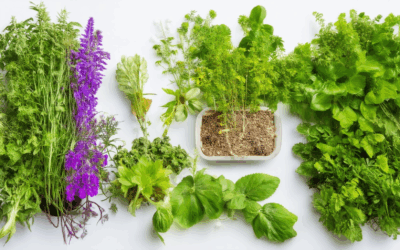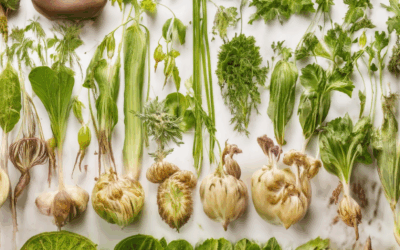Sustainable pest control has emerged as a popular and eco-conscious approach to managing unwanted insects and pests in residential and commercial settings. As awareness of environmental issues grows, more people are turning to methods that prioritize both effectiveness and environmental responsibility. This approach not only helps protect ecosystems but also ensures long-term solutions for pest-related problems. By adopting sustainable practices, individuals and businesses can reduce their reliance on harmful chemicals and contribute to a healthier planet. In this guide, we explore what sustainable pest control entails, its benefits, and how it can be implemented effectively.
Sustainable Pest Control
Sustainable pest control is an eco-friendly approach to managing pests that minimizes harm to people, wildlife, and the environment. It focuses on reducing reliance on harmful chemicals and instead uses natural, biological, and cultural methods to maintain balance in ecosystems.
Key Components of Sustainable Pest Control
- Integrated Pest Management (IPM): A holistic approach that combines biological, chemical, and cultural methods to effectively manage pests while preserving biodiversity and soil health.
- Organic Pest Control: Utilizes natural pesticides derived from plants, animals, and minerals, such as neem oil, pyrethrins, and rotenone, which are less toxic to humans and wildlife.
- Natural Predators: Encourages the presence of beneficial organisms like ladybugs, lacewings, and parasitic wasps to control pest populations naturally.
- Cultural Methods: Techniques like crop rotation, intercropping, and companion planting to create habitats that deter pests and promote biodiversity.
Effective Strategies for Sustainable Pest Control
- Biological Control: Introduce natural predators or parasites to reduce pest numbers. For example, ladybugs can be released to control aphids.
- Chemical Control: Use minimal, low-toxicity chemicals as a last resort, ensuring they pose little risk to non-target species and water systems.
- Cultural Practices: Implement practices like crop rotation and companion planting to disrupt pest habitats and reduce infestations.
- Resistant Varieties: Choose plant varieties that are naturally resistant to common pests, reducing the need for intervention.
Examples of Sustainable Practices
- Using neem oil as a natural pesticide for roses and shrubs.
- Planting flowers that attract pollinators to support biological pest control.
- Applying compost or manure to improve soil health and deter pests.
- Setting up bird feeders to reduce bird-predated pest populations.
By adopting sustainable pest control methods, gardeners and farmers can protect their crops while contributing to a healthier planet. It’s not just about controlling pests—it’s about fostering harmony between people, nature, and the ecosystems we share.
Learn more about sustainable gardening practices or explore our Integrated Pest Management guide to dive deeper into sustainable solutions.
What is the most environmentally friendly method for controlling pests?
Controlling pests in an environmentally friendly manner requires careful consideration of sustainable practices. One of the most effective methods is Old Seed ‘s approach to integrated pest management (IPM), which combines biological, chemical, and cultural controls to minimize environmental impact.
Here are some key strategies:
- Integrated Pest Management (IPM): This method uses a mix of biological control agents, natural predators, and organic pesticides to manage pest populations without harming the environment. By understanding local ecosystems, IPM ensures that pest control measures are both effective and eco-friendly.
- Biological Control: Introducing natural predators or parasites to control pest populations is a safe and sustainable alternative. For example, ladybugs are often used to control aphids in gardens and farms.
- Natural Predators: Encouraging animals like birds or bats to eat pests can reduce their numbers naturally. This approach works well in rural or wild areas where these predators are present.
- Composting: Creating compost from kitchen scraps and yard waste not only reduces landfill waste but also attracts earthworms and other beneficial organisms that help break down organic matter. These organisms can act as natural decomposers of pests.
- Traps and Barriers: Using simple traps or physical barriers like netting can effectively capture pests without resorting to harmful chemicals. This method is particularly useful for garden pests like mice or insects.
By adopting these methods, individuals can significantly reduce their reliance on synthetic pesticides while protecting the environment. Old Seed advocates for these practices as part of its commitment to sustainable gardening and farming practices.
Most Environmentally Friendly Pesticides
When seeking eco-friendly solutions for pest control, several natural pesticides stand out due to their minimal environmental impact:
- Neem Oil : Derived from the neem tree, neem oil is a natural pesticide and fungicide. It acts as a repellent and can effectively combat various pests without harmful chemical residues.
- Diatomaceous Earth : A fine powder sourced from fossilized algae, it’s non-toxic and safe for humans and pets. It works by physically absorbing water from pests, leading to their dehydration and death.
- Boric Acid : A natural compound used to control ants, roaches, and other pests. It’s generally safer than many synthetic options and degrades naturally in the environment.
- Insecticidal Soap : Made from natural ingredients, it’s effective against soft-bodied insects like aphids. Its biodegradable nature reduces chemical runoff concerns.
- Pyrethrins : Extracted from chrysanthemum flowers, these natural pesticides paralyze insects. They break down quickly, minimizing environmental impact, though care is needed around pets like cats.
Each option offers unique benefits, making them suitable for various scenarios. Consider factors like the specific pest, application frequency, and environmental sensitivity when choosing the best approach.
Disadvantages of Sustainable Pest Management
Sustainable pest management offers numerous benefits, but it also presents several potential drawbacks:
- Higher Initial Costs : Implementing sustainable methods can involve significant upfront investments in materials, training, and equipment, which may be a barrier for some individuals or businesses.
- Reduced Effectiveness : In some cases, sustainable methods may be less immediately effective than conventional chemical treatments, particularly if not applied correctly or if the infestation is severe.
- Limited Resource Availability : Access to necessary tools and products for sustainable pest control can be inconsistent, depending on the region and local regulations.
- Increased Time Requirements : Sustainable practices often demand more time for application, monitoring, and maintenance compared to traditional chemical methods.
- Ongoing Maintenance Needs : Sustainable approaches may not completely eliminate pests, requiring continuous effort to manage populations over time.
- Learning Curve : Newcomers may face challenges in mastering sustainable techniques, necessitating additional training or resources for effective implementation.
- Public Awareness and Education : Limited awareness of sustainable methods can hinder adoption, potentially leading to continued reliance on conventional chemicals.
These factors highlight the importance of understanding trade-offs when considering sustainable pest management strategies, ensuring that they align with individual needs and resources.
Disadvantages of Sustainable Management
Sustainable management, while beneficial in the long run, presents several challenges and potential drawbacks:
- Complexity of Integration:** Sustainable management requires balancing economic, social, and environmental goals, which can lead to conflicting priorities and decision-making complexities.
- High Costs:** Implementing sustainable practices often involves significant upfront investments, which can strain budgets, particularly for smaller organizations or those unfamiliar with these methods.
- Resource Constraints:** Sustainable management relies on finite natural resources, leading to concerns about long-term availability and potential scarcity.
- Regulatory Challenges:** Navigating diverse and evolving regulations can create obstacles for organizations aiming to adopt sustainable practices across different regions or industries.
- Public Perception Issues:** Misinformation and varying public opinions on certain sustainability practices can lead to resistance or skepticism among stakeholders.
- Lack of Clear Metrics:** Measuring the effectiveness of sustainable management efforts can be challenging due to the diversity of indicators and lack of standardized metrics.
Is Integrated Pest Management Good or Bad?
Integrated Pest Management (IPM) is widely regarded as a beneficial approach for managing pests in agricultural settings. However, its effectiveness depends on proper implementation and understanding of its principles.
Advantages of Integrated Pest Management
- Reduction in Chemical Use: IPM minimizes the reliance on hazardous pesticides, protecting ecosystems and human health.
- Improved Crop Yields: By controlling pests effectively, IPM helps maintain healthier crops, leading to higher yields.
- Economic Efficiency: IPM often results in lower costs due to reduced pesticide use and lower susceptibility to pest resistance.
- Environmental Benefits: IPM promotes biodiversity and reduces environmental degradation associated with excessive pesticide use.
Challenges of Integrated Pest Management
- Initial Costs: Implementing IPM may require significant upfront investment in training and tools.
- Pest Resistance: Overuse of chemicals can lead to pest populations developing resistance, making IPM less effective.
- Complexity: Effective IPM programs require continuous monitoring and adaptability to changing conditions.
Comparison with Traditional Methods
- Traditional Pest Control: Often relies on chemical pesticides, which can contaminate soil, water, and harm non-target species.
- IPM vs. Traditional: IPM offers a more sustainable alternative by combining biological, cultural, and chemical methods in a balanced way.
Conclusion
Integrated Pest Management is generally good for reducing environmental impact, improving crop resilience, and lowering costs. However, its success depends on proper education, consistent monitoring, and tailored strategies. For those looking to adopt sustainable practices, IPM is a valuable tool that aligns with goals like heirloom gardening and eco-conscious farming.
For more insights, explore sustainable gardening techniques and learn how IPM can benefit your farming or gardening efforts.








0 Comments